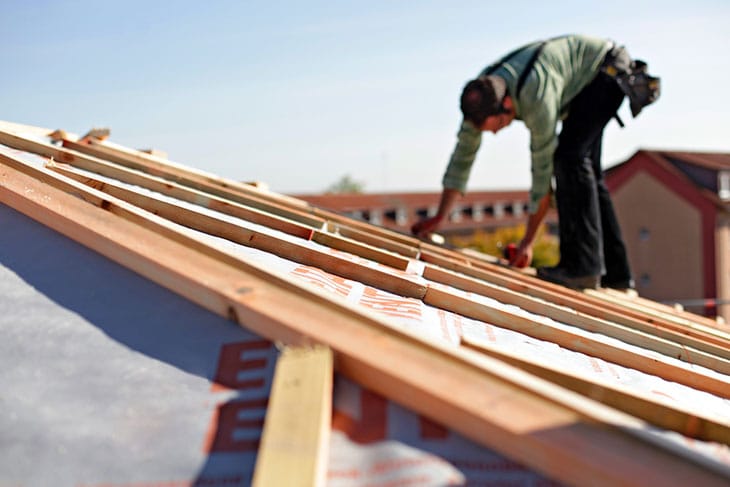For insulation contractors, steady homeowner demand is the key to keeping crews busy and revenue consistent. Whether you specialize in spray foam, blown-in cellulose, or energy-efficiency upgrades, the ability to connect with the right homeowners, at the right time, makes all the difference.
This guide breaks down practical ways insulation companies can generate qualified homeowner inquiries, improve response rates, and measure ROI from lead generation.
- What Is an Insulation Lead and Why Does It Matter?
- How Can Insulation Contractors Generate Local Leads Online?
- Are Lead Generation Services Worth It for Insulation Contractors?
- How Quickly Should Contractors Respond to Insulation Leads?
- How Do Insulation Contractors Measure ROI from Lead Generation?
- What Kinds of Insulation Projects Create the Most Demand?
- What Trends Are Driving Insulation Demand?
- Key Takeaways
- FAQ: Insulation Leads for Sale
What Is an Insulation Lead and Why Does It Matter?
An insulation lead is a homeowner actively seeking energy-efficiency improvements, attic or wall insulation, or crawl-space upgrades. These leads are especially valuable because insulation is often part of a larger home performance or weatherization project — meaning homeowners have already set aside budget and are ready to move forward.
Consistent insulation leads give contractors predictable workflow and the ability to plan labor and materials more efficiently.
To understand how insulation leads are commonly priced and delivered across the home improvement industry, see How Much Do Modernize Leads Cost.

How Can Insulation Contractors Generate Local Leads Online?
Most homeowners searching for insulation services begin online, often by researching cost, energy savings, or local rebates. To make sure your business appears where they’re looking:
- Optimize your website for local SEO using keywords like “attic insulation near me” or “spray foam insulation in Phoenix.”
- Maintain an accurate Google Business Profile with recent photos, verified contact info, and positive reviews.
- Publish content that explains cost savings, energy efficiency benefits, or before-and-after project results.
- Encourage satisfied homeowners to leave reviews and refer others, word-of-mouth remains one of the highest-converting insulation lead sources.
For insights into homeowner decision-making in the home improvement process, explore Understanding Homeowner Needs for Energy-Efficient Projects.
Are Lead Generation Services Worth It for Insulation Contractors?
Lead generation platforms can be useful for insulation companies when they deliver verified, high-intent homeowner inquiries. The best programs allow contractors to:
- Filter leads by project type and ZIP code
- Set budgets or volume caps
- Receive new leads in real time
This approach ensures every opportunity aligns with your service area and project capacity. Focus on services that give you visibility into lead source quality and allow for transparent cost-per-lead data.
How Quickly Should Contractors Respond to Insulation Leads?
Speed of response often determines whether a lead converts into a booked job. Homeowners researching insulation usually want quotes quickly to compare contractors or qualify for rebates.
Set up automated notifications or CRM alerts so your team can contact new inquiries within minutes. Contractors who respond first typically win more jobs and maintain lower acquisition costs. Learn more about timing expectations and best practices in What to Expect When You Sign Up for Modernize Leads.
How Do Insulation Contractors Measure ROI from Lead Generation?
Tracking lead performance is essential for long-term profitability. Focus on these key metrics:
- Cost per lead (CPL)
- Conversion rate from lead to appointment
- Close rate or booked-job percentage
- Return on ad spend (ROAS)
- Average revenue per project
Analyzing these indicators helps contractors determine which channels — paid ads, referrals, or shared lead sources — generate the strongest ROI. For a deeper look at optimizing performance, review the Data Feedback Loop guide.
What Kinds of Insulation Projects Create the Most Demand?
Homeowner demand for insulation projects is diverse, ranging from small retrofits to major energy-efficiency upgrades. Common projects include:
- Attic insulation: Among the most cost-effective home improvements, with strong ROI on energy bills.
- Spray foam insulation: Popular for air sealing and moisture control in new construction and retrofits.
- Wall and crawl-space insulation: Especially in older homes where air leaks and poor insulation are common.
- Energy audits and weatherization packages: Often bundled with insulation upgrades for whole-home efficiency.
According to the U.S. Department of Energy, properly installed insulation can reduce home heating and cooling costs by 10–50%, making these projects attractive to homeowners focused on comfort and long-term savings.
What Trends Are Driving Insulation Demand?
Several long-term trends continue to influence homeowner demand and contractor opportunity:
- Energy efficiency incentives: Rebates and tax credits through the Database of State Incentives for Renewables & Efficiency (DSIRE) encourage homeowners to upgrade.
- Sustainability goals: More homeowners are choosing low-VOC, recycled, and eco-friendly materials.
- Climate adaptation: Weather extremes, as reported by NOAA Climate Data, are prompting homeowners to improve comfort and reduce energy loss.
- Building code changes: Many regions now require higher R-value insulation for remodels and new builds.
By staying aware of these factors, insulation contractors can align their marketing and service offerings with emerging homeowner priorities.
Key Takeaways
- Insulation leads connect contractors with homeowners pursuing energy-efficient home upgrades.
- Strong local SEO, verified reviews, and quick response times improve lead conversion.
- Tracking CPL, conversion rate, and project value helps determine marketing ROI.
- Incentives and climate trends continue to expand homeowner demand for insulation services.